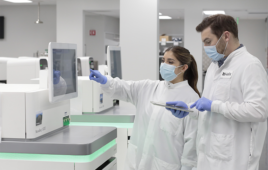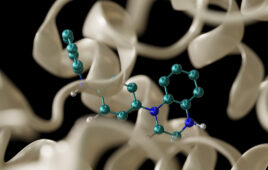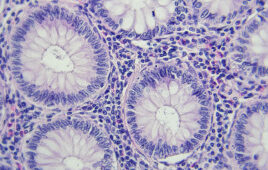 Harvard Stem Cell Institute (HSCI) researchers at Massachusetts Eye and Ear (MEE) have reconstructed an ancient virus that is highly effective at delivering gene therapies to the liver, muscle, and retina. The discovery, published this week in Cell Reports, has the potential to advance gene therapies that are not only safer and more potent than available therapies, but also to help a greater number of patients.
Harvard Stem Cell Institute (HSCI) researchers at Massachusetts Eye and Ear (MEE) have reconstructed an ancient virus that is highly effective at delivering gene therapies to the liver, muscle, and retina. The discovery, published this week in Cell Reports, has the potential to advance gene therapies that are not only safer and more potent than available therapies, but also to help a greater number of patients.“We believe our findings will teach us how complex biological structures, such as AAVs [adeno-associated viruses], are built,” said Luk H. Vandenberghe, an HSCI affiliated faculty member and senior author of the study. “From this knowledge, we hope to design next-generation viruses for use as vectors in gene therapy.”
A virus can be an ideal delivery system for gene therapy. In order to survive, a virus must infiltrate a host organism undetected and transfer its genetic material into the cells, where it will use the host to replicate and proliferate. Taking advantage of this process, researchers can insert therapeutic genes into a virus, then use the virus to shuttle the genes to the appropriate cells or tissues inside a human body.
So far, AAVs used for gene therapy have been chosen from viruses that naturally circulate throughout the human population. If people have been exposed to the virus, their bodies will likely recognize it, mount an attack, and destroy it before it can deliver the therapy. Engineering new, benign viruses could render the viruses unrecognizable and increase the number of people for whom a given gene therapy will work.
However, efforts to engineer improved AAVs have been stymied by their intricate structure. Like pieces of a puzzle, every protein in the shell of a virus must fit together perfectly for the virus to function normally. Altering proteins in one part of the virus to achieve a certain benefit, such as more efficient gene transfer or reduced recognition by host immune cells, could end up destroying the structural integrity of the entire shell.
To overcome this challenge, Vandenberghe, along with colleagues at Harvard Medical School, Schepens Eye Research Institute, and MEE, turned to evolutionary history for guidance. Over time, AAV ancestors underwent a series of changes that retained the structural integrity of the virus while slightly altering some of its functions. The researchers were able to recreate an evolutionary timeline of the changes and build nine synthetic ancestor viruses in the laboratory. When injected into mice, the most ancient of these, Anc80, successfully targeted the liver, muscle, and retina without producing toxic side effects.
In future studies, the researchers will characterize the interplay between the virus and host throughout evolution and continue to seek improved vectors for clinical applications. They will also examine the potential of Anc80 for treating liver diseases and retinal forms of blindness. “The vectors developed and characterized in this study demonstrate unique and potent biology that justify their consideration for gene therapy applications,” Vandenberghe said.
Source: Harvard University
Filed Under: Genomics/Proteomics



